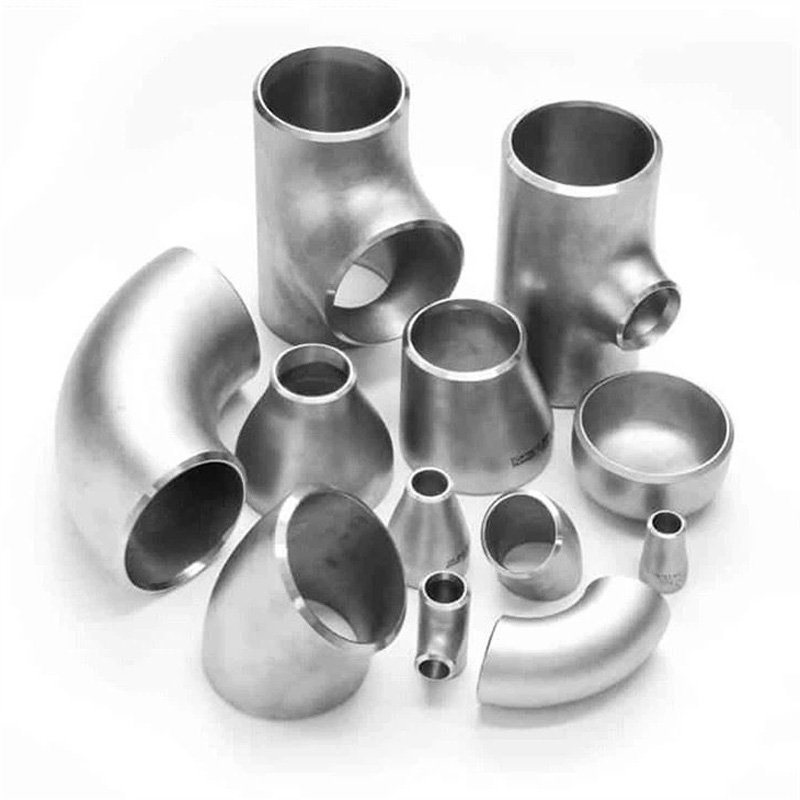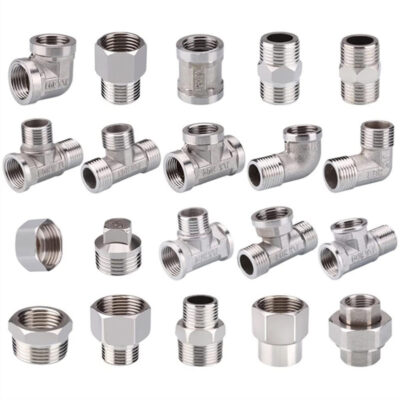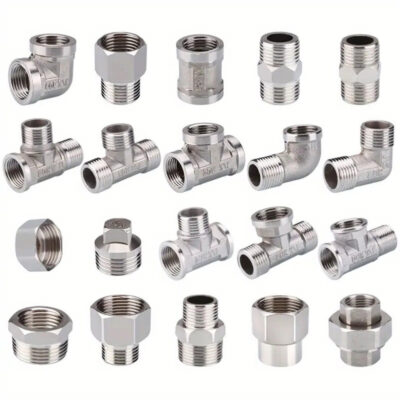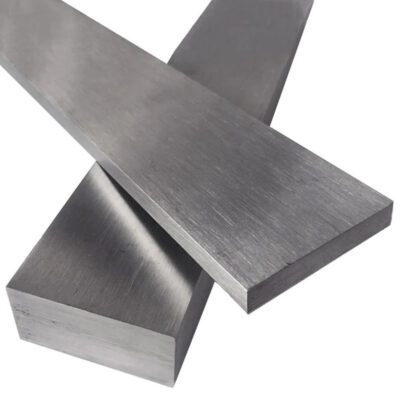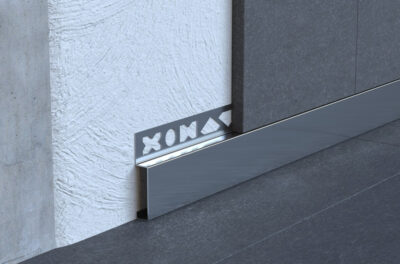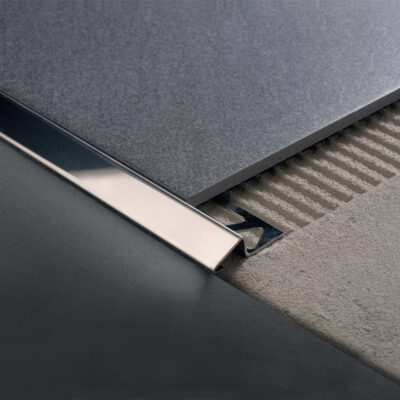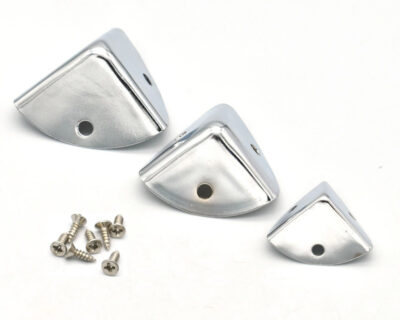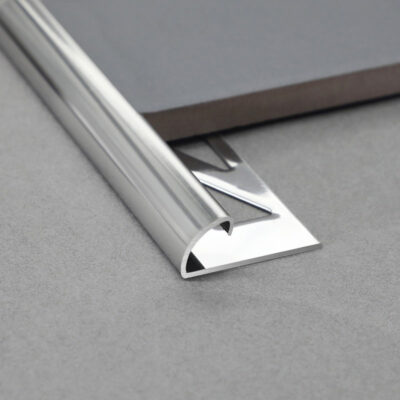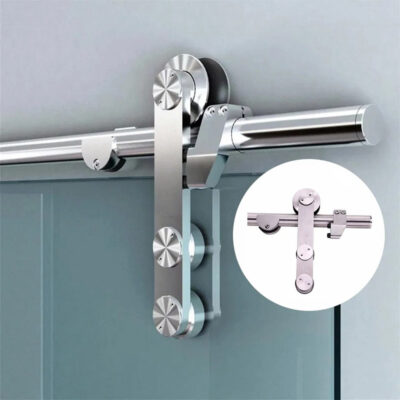Understanding the Critical Role of Stainless Steel Reducers and Caps in Modern Piping Systems
The integrity of any piping system often hinges on components that rarely get the spotlight. Last month, while touring a newly commissioned pharmaceutical manufacturing facility, I noticed something that many might overlook: the meticulous selection of stainless steel pipe fittings at critical juncture points. The plant engineer pointed specifically to the reducers and caps, explaining how these seemingly simple components were essential to the entire system’s functionality, compliance, and longevity.
Stainless steel reducers and caps might not be the most glamorous elements of industrial design, but they’re indispensable in countless applications where reliability meets strict requirements. These fittings enable transitions between different pipe sizes and provide secure termination points in piping systems across chemical, food processing, pharmaceutical, and countless other industries.
What makes these components particularly valuable is their remarkable combination of corrosion resistance, mechanical strength, and longevity. When fabricated from high-quality stainless steel alloys, these fittings maintain their structural integrity and hygienic properties even under challenging operating conditions. This attribute is especially crucial in systems that handle corrosive substances, extreme temperatures, or where strict sanitary standards must be maintained.
Let’s examine the technical specifications, selection considerations, and practical applications of stainless steel reducers and caps to understand why these components deserve careful attention from engineers and system designers.
The Essential Guide to Stainless Steel Reducers: Types, Materials, and Applications
Stainless steel reducers serve a fundamental purpose: connecting pipes of different diameters while maintaining system integrity. They come in several configurations, each designed for specific applications and installation methods.
The most basic distinction lies between concentric and eccentric reducers. Concentric reducers maintain a common centerline between the larger and smaller pipe, creating a symmetrical transition. This design is preferable in vertical piping runs where flow consistency is paramount. Eccentric reducers, meanwhile, maintain a flat side (typically the top in horizontal installations), which prevents the accumulation of air or the formation of vapor pockets. This characteristic makes eccentric reducers particularly valuable in systems where air entrapment could impair efficiency or cause operational issues.
During a recent consultation with Marcus Jennings, a metallurgical engineer with over 25 years of experience in industrial piping systems, he emphasized that “the selection between concentric and eccentric reducers isn’t merely about aesthetics—it fundamentally affects system performance, especially in applications involving multiphase flow or where complete drainage is essential.”
Beyond this basic categorization, stainless steel reducers are further classified by their connection method:
| Reducer Type | Connection Method | Common Applications | Key Advantages |
|---|---|---|---|
| Butt-weld | Connected via welding, creating a seamless joint | High-pressure systems, critical applications | Strongest connection, minimal flow restriction, excellent pressure integrity |
| Threaded | Uses NPT or other standard threading | Smaller diameter pipes, systems requiring frequent disassembly | Easy installation without specialized equipment, good for temporary connections |
| Socket-weld | Pipe inserts into the fitting and is welded in place | Moderate-pressure applications | Stronger than threaded connections, easier alignment during installation |
| Compression | Uses ferrules and nuts to create mechanical seal | Low-pressure applications, instrumentation connections | No welding required, allows for disassembly |
The material grade selection significantly influences performance characteristics. The most widely used stainless steel grades include:
304/304L: The workhorse grade offering good corrosion resistance and mechanical properties at a reasonable cost. Suitable for many general applications.
316/316L: Enhanced with molybdenum for superior corrosion resistance, particularly against chlorides. Preferred in marine environments, chemical processing, and pharmaceutical applications.
Duplex grades (such as 2205): Providing exceptional strength and corrosion resistance, these grades excel in demanding environments like offshore oil and gas facilities.
High-temperature grades (such as 309, 310): Engineered to maintain mechanical properties at elevated operating temperatures.
I recently observed a chemical processing facility that had initially installed 304 stainless steel reducers in a moderately corrosive environment. Within 18 months, they began experiencing localized corrosion issues. After consulting with materials specialists, they upgraded to 316L components, which have now performed flawlessly for over five years. This real-world example underscores the importance of proper material selection based on specific operating conditions.
Dimensionally, stainless steel reducers typically conform to established standards such as ASME B16.9 for butt-weld fittings or ASME B16.11 for socket-weld and threaded fittings. These standards define critical dimensions, tolerances, and testing requirements to ensure consistency and reliability across manufacturers.
Stainless Steel Caps: End-of-Line Protection and System Integrity
While reducers connect pipes of different diameters, stainless steel caps serve a different but equally crucial function: they terminate pipe runs, creating secure, pressure-tight closures. These components might seem straightforward, but their proper selection and installation are essential for system integrity.
Like reducers, caps come in several configurations based on the connection method:
Butt-weld caps provide the most robust termination, creating a virtually seamless closure. These are preferred in critical applications where joint integrity is paramount.
Threaded caps offer convenience when the system might require periodic access or modification. They’re commonly used in smaller diameter applications.
Socket-weld caps provide a middle ground—stronger than threaded connections but easier to install than butt-weld variants.
During a production facility tour last spring, a maintenance supervisor shared an insightful observation: “We’ve moved almost exclusively to butt-weld caps for permanent closures in our high-purity systems. Though installation requires more skill, the elimination of crevices and threads has dramatically reduced potential contamination points and maintenance requirements.”
Material selection for caps follows the same principles as reducers, with the application environment dictating the appropriate grade. However, caps often face unique challenges:
As terminal points in piping systems, they frequently experience dead zones where fluid can stagnate, potentially accelerating corrosion.
In systems with pressure fluctuations, caps may witness more stress than straight pipe sections due to their geometry.
In outdoor installations, caps can trap water or debris, creating microenvironments conducive to corrosion.
To address these challenges, many high-performance caps feature additional design elements:
| Feature | Purpose | Benefit |
|---|---|---|
| Increased wall thickness | Provides additional mechanical strength | Greater pressure resistance, reduced risk of deformation |
| Surface treatments | Enhances passive layer stability | Improved corrosion resistance, especially in crevice-prone areas |
| Precision machining | Creates tight-tolerance fit | Better sealing performance, reduced risk of leakage |
| Full penetration welding | Ensures complete fusion at joint | Eliminates potential leak paths, maximizes joint strength |
The dimensional standards for stainless steel caps typically align with those for other fittings, with ASME B16.9 governing butt-weld caps and ASME B16.11 covering socket-weld and threaded variants. These standards ensure interchangeability and reliable performance across different manufacturers.
I’ve noticed a growing trend toward specifying greater wall thickness for caps compared to the connecting pipe, especially in high-pressure or cyclic loading applications. This practice acknowledges the unique stress patterns that caps experience and represents an evolution in design thinking based on field performance data.
Critical Selection Factors for Stainless Steel Reducers and Caps
Selecting the appropriate stainless steel reducers and caps involves navigating several interconnected considerations. The stakes can be high—inappropriate selection can lead to premature failure, contamination issues, or significant maintenance expenses.
Dr. Eleanor Ramirez, who leads materials engineering for a major process equipment manufacturer, notes that “the failure of even a single reducer or cap can compromise an entire system, potentially leading to production downtime, product contamination, or safety incidents. Proper selection is not merely a technical exercise but a risk management strategy.”
Here are the key factors that should guide selection:
Process Fluid Compatibility
The chemical composition of the process fluid fundamentally dictates material selection. Different stainless steel grades exhibit varying resistance to specific corrosive agents:
- For general water service or mild chemicals, 304/304L typically provides adequate performance.
- For chloride-containing environments, 316/316L offers enhanced protection.
- For highly aggressive media such as hot concentrated acids, specialized grades like Alloy 20 or Hastelloy might be necessary.
I learned this lesson firsthand when consulting on a project where a food processing company had selected standard 304 stainless steel components for a system handling products with high salt content. Within months, localized corrosion appeared at several reducers. The subsequent replacement with 316L components resolved the issue, but at considerable expense and production disruption.
Operating Temperature and Pressure
Temperature affects both the mechanical properties and corrosion resistance of stainless steel:
- At elevated temperatures (above 800°F/427°C), standard austenitic grades may experience carbide precipitation, potentially reducing corrosion resistance.
- At very low temperatures, some grades maintain impressive toughness, making them suitable for cryogenic applications.
Pressure ratings depend on both material and wall thickness. The appropriate pressure-temperature rating should be verified against established standards such as ASME B16.5 or equivalent.
Surface Finish Requirements
The surface finish of stainless steel reducers and caps significantly impacts both performance and maintenance requirements:
| Surface Finish | Ra Value (μin) | Typical Applications | Key Benefits |
|---|---|---|---|
| Mill finish | 125+ | General industrial applications | Cost-effective, adequate for non-critical systems |
| 2B | 32-60 | General chemical processing | Good corrosion resistance, moderate cleanability |
| #4 (polished) | 20-25 | Food and beverage, pharmaceutical | Improved cleanability, enhanced appearance |
| Electropolished | 8-20 | Ultra-pure applications, bioprocessing | Minimized product adhesion, superior cleanability, enhanced corrosion resistance |
I’ve observed that specifying an appropriate surface finish isn’t just about aesthetics—it directly affects system cleanliness, product purity, and long-term performance. In bioprocessing applications, electropolished components have demonstrated superior microbial control compared to mechanically polished alternatives with similar measured roughness values.
Certification and Documentation Requirements
For critical applications, proper documentation provides essential verification of component properties:
- Material Test Reports (MTRs) verify chemical composition and mechanical properties.
- Positive Material Identification (PMI) testing confirms that delivered components match specified alloys.
- Surface finish certifications document that components meet cleanability requirements.
While this documentation adds cost, it provides crucial verification, especially for regulated industries like pharmaceutical or nuclear applications.
Manufacturing Standards Compliance
Adherence to recognized standards ensures consistent quality and interoperability:
- ASTM A403 governs wrought stainless steel fittings
- ASME B16.9 covers butt-weld fittings dimensions
- ASME B16.11 specifies socket-weld and threaded fitting dimensions
- MSS-SP specifications provide additional guidance for special applications
These standards establish minimum requirements for material properties, dimensional tolerances, and testing methodologies.
Installation and Maintenance Considerations for Long-Term Performance
The performance of stainless steel reducers and caps depends not only on proper selection but also on correct installation and maintenance practices. Even premium components can fail prematurely if improperly installed or maintained.
Installation Best Practices
When installing stainless steel reducers and caps, several key practices help ensure optimal performance:
For welded connections:
- Proper material preparation, including cleaning to remove contaminants that might affect weld quality or introduce corrosion sites
- Use of appropriate welding procedures and filler metals compatible with the base material
- Implementation of proper purge techniques to protect the weld root and heat-affected zone
- Post-weld cleanup to restore passive layer and remove heat tint
For threaded connections:
- Use of appropriate thread sealants compatible with the process fluid
- Application of proper torque to achieve sealing without thread damage
- Avoidance of over-tightening, which can stress components and lead to cracking
- Implementation of proper thread engagement to ensure mechanical integrity
For all connections:
- Proper alignment to avoid stress concentration
- Support provisions to minimize vibration and mechanical loading
- Consideration of thermal expansion effects in system design
I once witnessed an installation where a contractor failed to properly purge a high-purity stainless system during welding. The resulting oxide formation inside the pipe created not only a contamination issue but also initiated localized corrosion at several reducer connections. The expensive lesson reinforced that proper installation procedures are not optional—they’re essential for system integrity.
Maintenance Requirements
While stainless steel components are often selected for their low maintenance requirements, some periodic attention helps ensure continued performance:
- Regular inspection for signs of corrosion, particularly at crevices and areas of potential stagnation
- Cleaning protocols appropriate to the specific environment and surface finish
- Monitoring for mechanical issues like vibration that might stress connections
- Documentation of any observed issues to identify trends or systemic problems
In facilities handling corrosive materials, I’ve found that implementing a proactive inspection program focused specifically on reducers and caps can identify potential issues before they become critical failures. These components often experience unique stress patterns or flow conditions that may accelerate degradation relative to straight pipe sections.
Troubleshooting Common Issues
Even well-selected and properly installed components can occasionally experience problems. Understanding common issues helps with prompt diagnosis and resolution:
Crevice corrosion: Often appears at the interface between fittings and pipe, particularly in chloride-containing environments. More common with threaded or socket-weld connections than with butt-weld fittings.
Stress corrosion cracking: Can occur when tensile stress combines with specific corrosive environments. Proper stress relief after fabrication can mitigate this risk.
Galvanic corrosion: Possible when stainless steel connects to dissimilar metals without proper isolation. Using compatible materials or installing dielectric fittings can prevent this issue.
Leakage at threads: May result from inadequate thread engagement, improper sealant application, or thermal cycling. Following proper installation procedures is the best preventive measure.
A process engineer I collaborated with recently shared how they resolved persistent leaks at threaded caps in a cyclic temperature application. Rather than continually retightening the leaking connections, they analyzed the root cause—thermal expansion differences between the pipe and cap. By switching to an alternative thread sealant with greater flexibility, they eliminated the recurring problem.
Industry-Specific Applications and Requirements
Different industries have unique requirements for stainless steel reducers and caps, driven by their specific operating environments, regulations, and performance needs.
Food and Beverage Processing
In food and beverage applications, hygiene is paramount. Key considerations include:
- Surface finish requirements typically specify polished surfaces (often #4 finish or better) to prevent product adhesion and facilitate cleaning
- Material selection favors 316L stainless steel for its enhanced corrosion resistance against cleaning chemicals
- Design elements eliminate crevices and product trap points
- Connections must withstand frequent thermal cycling during cleaning and sanitization processes
While visiting a dairy processing facility, I noticed they exclusively used concentric reducers in vertical runs and eccentric reducers (flat side up) in horizontal sections. When I inquired about this consistent practice, the engineering manager explained it was specifically to eliminate potential product hold-up areas that could harbor bacteria or contaminate product during changeovers.
Pharmaceutical and Bioprocessing
Perhaps no industry has more stringent requirements for pipe fittings than pharmaceutical manufacturing:
- Ultra-high purity requirements often dictate electropolished surfaces with Ra values of 15 μin or better
- Complete traceability through comprehensive documentation packages
- Material certification requirements, including MTRs and sometimes PMI testing
- BPE (Bioprocessing Equipment) standard compliance for critical applications
- Rigorous qualification and validation protocols for installed components
A validation specialist from a leading pharmaceutical company explained to me that their documentation requirements for a single critical reducer can exceed 20 pages, covering everything from raw material sourcing to final inspection results. This level of scrutiny reflects the critical nature of these components in maintaining product quality and regulatory compliance.
Chemical Processing
Chemical processing often involves challenging environments that test the limits of material performance:
- Highly corrosive media may require specialized alloys beyond standard 316L
- High temperature applications may need stabilized grades to prevent sensitization
- Pressure ratings become critical in reactor and high-pressure separation systems
- Resistance to specific chemical species drives material selection decisions
The diversity of chemical processing applications means no single solution fits all scenarios. I’ve consulted on chemical plants where different process units within the same facility required completely different fitting specifications based on the specific chemistries involved.
Oil and Gas Applications
Offshore and onshore oil and gas applications present particular challenges:
- Exposure to chlorides in marine environments requires enhanced corrosion resistance
- High pressure ratings for production equipment
- Temperature extremes from cryogenic LNG to high-temperature processing
- Sulfide stress cracking resistance for sour service applications
Duplex stainless steels have gained significant traction in this sector due to their excellent combination of strength and corrosion resistance. A production engineer working in North Sea operations told me they’ve standardized on super duplex fittings for most seawater-exposed services after experiencing repeated failures with conventional austenitic grades early in the field’s life.
Emerging Trends and Future Developments
The field of stainless steel pipe fittings continues to evolve in response to industry needs and technological advancements. Several trends are worth noting:
Advanced Manufacturing Techniques
Modern manufacturing methods are transforming how stainless steel reducers and caps are produced:
- Additive manufacturing (3D printing) enables the production of complex geometries that would be challenging with traditional methods
- Improved machining techniques allow for tighter tolerances and better surface finishes
- Enhanced welding and heat treatment processes improve component integrity and performance
During a recent industry conference, Dr. James Morrison, who leads materials research at a major fitting manufacturer, shared results from their additive manufacturing program. “We’re now able to produce custom reducers with internal flow path optimization that reduces pressure drop by up to 30% compared to conventional designs. This represents a fundamental shift in thinking—from standardized components to application-optimized solutions.”
Material Innovations
New alloy developments continue to expand performance envelopes:
- Advanced lean duplex grades offer improved corrosion resistance at lower cost than traditional options
- Super austenitic alloys provide exceptional resistance to specific corrosive environments
- Surface modification technologies enhance performance of standard materials
I’ve been particularly impressed by recent developments in nitrogen-enhanced stainless steel grades that offer substantially improved pitting resistance in chloride environments while maintaining good fabricability.
Sustainability Considerations
Environmental concerns increasingly influence material and design decisions:
- Life cycle assessment becoming part of selection criteria
- Energy efficiency of manufacturing processes gaining importance
- Recyclability and circular economy principles affecting design decisions
- Reduction in material usage through optimized designs
A sustainability engineer I consulted with recently has been documenting how proper material selection for pipe fittings, though sometimes more expensive initially, yields substantial lifetime carbon footprint reductions through extended service life and reduced replacement frequency.
Enhanced Analysis and Selection Tools
Digital tools are transforming how engineers select and specify components:
- Computational fluid dynamics models optimize internal geometries
- Finite element analysis predicts structural performance under complex loading
- Material selection software incorporates corrosion data for specific environments
- Digital twins enable better predictive maintenance and lifecycle management
These tools help engineers move beyond rule-of-thumb selection to truly optimized choices based on actual operating conditions and specific requirements.
Making Informed Decisions: Balancing Performance, Cost, and Reliability
Selecting the right stainless steel reducers and caps involves balancing multiple factors, including immediate cost, long-term performance, and system reliability requirements. Based on both research and firsthand experience, here are some guidelines for making informed decisions:
Start with the application environment: The specific conditions—chemical exposure, temperature, pressure, cleanliness requirements—should drive initial material selection decisions.
Consider the entire system lifecycle: While higher-grade materials or better surface finishes may increase initial costs, they often reduce long-term expenses through extended service life and reduced maintenance.
Recognize that connections are potential failure points: Pipe fittings typically experience more stress and potential issues than straight pipe runs, justifying additional attention during both selection and installation.
Document your basis of selection: Maintaining records of why specific choices were made provides valuable insight for future maintenance or system modifications.
Work with knowledgeable suppliers: Experienced manufacturers like E-Sang can provide valuable guidance on material selection and application suitability based on extensive field experience.
Don’t compromise on quality for critical applications: The cost differential between standard and premium components is typically small compared to the potential consequences of failure.
Consider standardization benefits: While customizing every component for its specific application might seem optimal, maintaining a reasonable level of standardization offers practical benefits in procurement, inventory management, and maintenance.
The quality of reducers and caps in a piping system might not be immediately visible, but their performance profoundly affects system reliability, maintenance requirements, and even safety. By understanding the technical aspects of these components and making informed selections, engineers can ensure their piping systems deliver optimal performance throughout their intended service life.
As industrial processes continue to push the boundaries of temperature, pressure, and chemical resistance, the humble reducer and cap will continue to play critical roles in system integrity. Their selection deserves the same thoughtful analysis given to more prominent system components—because a piping system is only as reliable as its weakest point.
Frequently Asked Questions About Stainless Steel Reducers and Caps
Q: What are Stainless Steel Reducers and Caps, and how are they used?
A: Stainless Steel Reducers and Caps are key components in piping systems. Stainless Steel Reducers are fittings used to connect pipes of different diameters, ensuring smooth fluid flow between them. They are commonly used in industries requiring precision connections, such as brewing or chemical processing. Stainless Steel Caps serve as end seals, protecting pipe ends from contamination and leakage. They are manufactured from durable materials like 304 and 316 stainless steel for enhanced corrosion resistance.
Q: What types of environments are Stainless Steel Reducers and Caps suitable for?
A: Stainless Steel Reducers and Caps are ideal for harsh environments due to their corrosion-resistant properties. They are widely used in industries like food processing, chemical plants, and marine applications where exposure to corrosive substances is common. The presence of molybdenum in 316 stainless steel, for example, makes it particularly effective against pitting and crevice corrosion.
Q: What are the benefits of using Stainless Steel Reducers and Caps over other materials?
A: The use of Stainless Steel Reducers and Caps offers several benefits:
- Durability: They are highly resistant to corrosion and can withstand extreme temperatures and pressures.
- Hygiene: Easy to clean, making them ideal for sanitary environments like food processing.
- Reliability: Provide leak-tight connections, ensuring the integrity of fluid flow systems.
Q: How do I choose between 304 and 316 Stainless Steel Reducers and Caps?
A: The choice between 304 and 316 stainless steel depends on the application environment:
- 304 Stainless Steel is generic and suitable for most general applications due to its cost-effectiveness.
- 316 Stainless Steel offers better resistance to pitting and crevice corrosion, making it ideal for environments with exposures to chloride or other corrosive chemicals.
Q: What maintenance is required for Stainless Steel Reducers and Caps?
A: Maintenance for Stainless Steel Reducers and Caps is minimal due to their durable nature. Regular cleaning with appropriate substances to remove dirt or chemical residues is recommended. Additionally, ensuring that connections are tightened correctly can help prevent leaks and maintain system integrity.
Q: Can Stainless Steel Reducers and Caps be used for high-pressure applications?
A: Yes, Stainless Steel Reducers and Caps are capable of handling high-pressure applications. They are often designed to meet specific pressure standards, such as Class 150# fittings. However, their suitability for extreme high-pressure environments should be checked against the manufacturer’s specifications to ensure compatibility with your system’s requirements.

